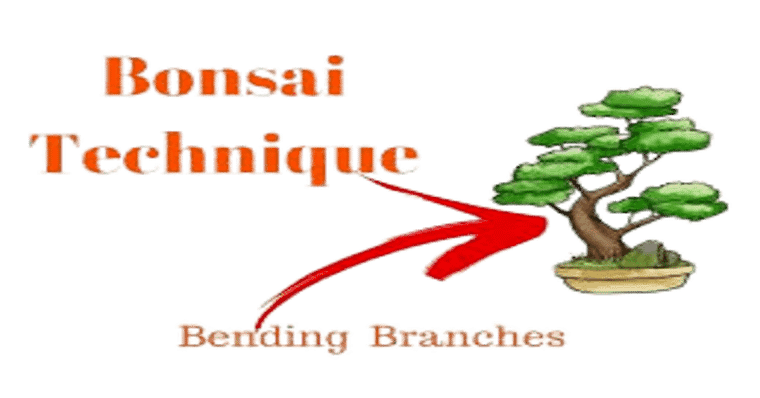A thick trunk enhances the aesthetics of your bonsai and gives support to the entire plant. But making the trunk completely fat is not an easy task. right? If your bonsai trunk is narrow and your goal is to make it thicker, you must recognize how to make bonsai trunk thicker.
Bonsai requires a lot of growth to thicken the trunk. So for faster growth you should take the plant out of the shallow pot and plant it in the ground or in a bigger pot. Keep waiting until the trunk reaches the desired thickness.
This is not the only way. In this article, we have discussed other simple and easy techniques to grow multi trunk thick bonsai. We explore the fastest and longest process to help you choose the best one for you.
Let the reading start!
How To Make Bonsai Trunk Thicker
Content Overview
It is possible for your bonsai tree to grow thick trunks if you leave it in a large container without pruning it. Once its outline is neat and strong, then train them again so that they fit into the small pot before carefully planting.!
To force a trunk to thicken, your bonsai must be allowed to grow in deep, fertile soil and held in place by a strong root system. This will encourage the growth of new roots which will then feed the plant sap allowing the trunk to thicken. If you use a shallow pot, make sure it drains well and the root ball isn’t sitting in water.
Thick branches also grow on plants that are allowed to develop thick trunks, so you can use wire and needle-point pliers to shape them when they’re young. Otherwise, leave them alone until the trunk thickens before wiring your bonsai tree structure.
What is the role of bonsai trees trunk?
The main role of the trunk is to provide structural support to the tree and connect the branches to the roots. It transports food and water from the roots to the leaves and helps anchor the plant to the soil. Trunk thickness affects how well the tree can perform these functions.
As a bonsai beginner, it’s important to remember that a tree’s trunk will thicken more slowly than its branches. So, don’t get too impatient if your tree isn’t as dense as you’d like. With time and patience, you will be able to create a beautiful bonsai with a strong trunk.
Techniques for thickening the trunk of bonsai trees
Face it: a thin-stemmed bonsai is unattractive to most. It doesn’t matter how old, big or beautiful the rest of the tree is; You won’t get a second glance from most people on a bonsai with a thin trunk.
In most people’s minds, a thin-stemmed bonsai is a sign of age and experience not recognized by the collector or the artist. This may be true in some cases, but for others it is more about aesthetics.
Either way, there are seven techniques that can be used to thicken bonsai trunks.
1.Growing in the Ground
A bonsai tree is not a special type of tree. These are full-sized plants that have been confined to a small container to keep their miniature size. If you remove a bonsai plant from its pot and plant it directly in the ground, it will eventually grow to its normal size.
It can take several years for the tree to grow to its full size, so many bonsai gardeners will plant their tree in the ground for a short time to encourage trunk growth. Once the plant’s trunk has reached the desired thickness, gardeners will remove the bonsai from the ground and return it to a shallow container to stop rapid growth.
It can take years to thicken a bonsai truck using this method. Gardeners who use this method prefer to use fast-growing tree species such as Chinese elm or ficus.
When you plant your plant in the ground you need to assess and solve potential problems.
Weather and temperature
Before growing your bonsai tree in the ground, make sure that your bonsai tree can survive outside all year round. Tropical plants that require high humidity and warm weather will not survive harsh winters.
Soil nutrition and drainage
If you plant your bonsai tree in soil that is not properly fertilized, it may not grow properly. If the bonsai soil doesn’t drain properly, you risk root rot which can eventually kill your bonsai.
Pests and diseases
Planting your bonsai tree outdoors exposes it to pests and diseases. Check your plant regularly so you can treat it quickly if needed.
An alternative to growing bonsai in the ground is to plant the plant in a large container. Growing a bonsai tree in a large container gives the gardener more control during rapid growth.
2.Sacrificial Branches
Say branch
Another popular way to thicken the trunk of a bonsai tree is to use sacrificial branches. This technique focuses on planting a side branch near the base of the trunk that will provide it with a lot of nutrients, thereby thickening the trunk of the tree.
The side branch is planted while the rest of the tree can be cut and bounded. When the bonsai stem reaches the desired thickness, the extra added branch is removed to trim and shape the bonsai. This method does not require planting bonsai trees on land and is an excellent choice for gardeners with limited areas.
A bonsai tree planted using this technique also takes many years to thicken the trunk of the branching system. Both side branches can be used as a sacrificial branch. But the branch you choose must be very thick and leave a significant scar. Bonsai masters have been working to heal bark cuts for years.
For curly hair growth, you need to wire the extension to straighten. Pick a branch in the middle of the trunk, and as the trunk grows, it adds to the girth of the trunk below the attachment point. Nothing will be thick above the sacrum. This is a great way to create a tapered trunk.
3.The Trunk Merging
This is another way to quickly build a thick trunk. This technique is sometimes referred to as trunk fusion and may not work on existing bonsai trees.
Alternatively, you need to tie several trees together so that they eventually merge and create the illusion of being one tree. The trunk joining technique works perfectly with fast-growing bonsai species such as ficus or Chinese elm.
Joining trunks is not a traditional method for thickening the trunk of a bonsai tree, but numerous bonsai masters use this method because it is the fastest way. But it takes several months to tie the trees and make thick trunks. The way the trunks are combined gives gardeners more control over the plant’s design. They can map shapes and start tapping quickly.
But this method has some disadvantages. For example, if a plant dies during the fusion process, it can free up space in the stem and prolong the fusion time.
So if there are dead trees you need to prepare some trees to replace them. This will eventually affect the attractiveness of your bonsai tree as there may be different plants on each side of the tree. A plant can overwhelm resources and cause the death of other plants. It is essential to ensure that all plants have adequate water, light and nutrients for growth.
4.Cutting Back the trunk
Planting a tree in the ground is best for this technique. This is definitely a thick trunk and a great way to make a great trapper for your bonsai tree.
The first big cut you should make is along the trunk, where it has the desired thickness from this tree. It is essential to ensure that you do not cut the tree too short or too large.
After that, you have to wait until the bonsai tree starts to grow. Then, you need to pick a branch to wire vertically, because this branch will form the next layer of the trunk. To thicken the bottom of the bonsai, don’t forget to keep other branches for future rotation.
5.Splitting Bonsai Trunk
Cutting bonsai trunks is the fastest way to get trunk thickness. With this method, you will split your bonsai stem down the middle and use wires to separate the two ends of the trunk while it heals. Cutting bonsai trunk gives almost immediate results.
It should only be applied to plants that can receive this treatment. Recommended bonsai tree species are Chinese elm, juniper, boxwood and ficus. Additionally, this technique should be applied at the beginning of the growing season
You need to remove the bonsai plant from its shallow pot and place it upside down. Using a saw, start splitting the trunk in half until you’re halfway there. When you transplant a bonsai tree, separate the stem or wooden penny from the two parts of the turnk.
It is best to grow a plant in a large container to facilitate the healing process. This will make your bonsai tree look like a thick trunk and it takes years for this trunk to fully heal.
6.Bend to Grow
Credit: Pinerest.com
This is a dead end but definitely an excellent way to plant a bonsai with a good, thick trunk. This bending growing technique will only work with bonsai species with lots of side branches, like the one you’re using.
First, you need to allow this tree to grow at the end of the growing season, where you want the main trunk to bend down instead of bending the vertical branch up.
In a few months, this will give the bonsai a tapered trunk as the side branches gradually stiffen compared to the main trunk. Once the bonsai trunk has reached the desired thickness, you can either leave the central trunk as a sacrificial branch for a while or cut it off.
This pruning problem is obviously a major blemish to be noticed in bonsai. Therefore, it is recommended to use some wood cutters and cut the tree to ensure that there is a scar behind the tree.
7.Induces swelling
This is an ancient Japanese method used by respected bonsai masters. In this technique, you may use a wire tourniquet with the apparent intention of causing swelling.
Positioned right around the base of the bonsai tree, you can create a beautiful tapered trunk, even with trunks of tree species that do not grow naturally, for example, Chinese elms.
Note that this method can give you very quick results. If it is applied to fast-growing species, gardeners can expect to see thicker stems in the same growing season. However, it helps if you also remember that this procedure is a permanent scar. Use it with caution and moderation.
Pro Tips
- Try to choose specific species for each method to adjust the process as not all types of plants can go through the same process.
- Since planting outdoors can be prone to many problems, you may want to consider repotting the plant in a larger container. This process not only saves you from various obstacles but also helps to control the rapid growth of the growing season.
- For smooth tapering, you can grow several branches as a sacrifice branch. First select higher branch and finally go to lower branch.
Summary
Thick thunk are the ultimate goal of every bonsai garden and achieving it will make you feel proud. Fortunately, we have shared several methods with you. So learning how to make bonsai trunk thicker will definitely help you in this regard.
Hopefully, you can have proper patience and dedication to achieve your goals by following our information. No more today. If you have any Bonsai related experience to share, comment and let us know.




